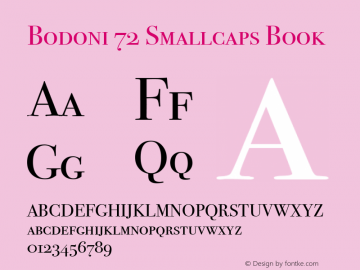
Heinrich Jost created the Bauer version in 1926 to include a Roman, Title, Italic, Bold and Italic Bold weight. Other type foundries that were to offer variations of Bodoni are the Damon Type Foundry’s Bartlet©, Haas Type Foundry which produced a version licensed to Stemple, Amsterdam Type Foundry and Berthold and the Bauer Type Foundry. Hunter Middleton, also at Ludlow, was to design the Bodoni Modern™, Bodoni Classic™ and Bodoni Italic™ after ten years of research that are still today considered the most faithful redesign of Bodoni’s original roman design. Wiebking went on to design a bold variation of this font in 1930. At around the same time Robert Wiebking at Ludlow designed a light and italic variation along with an italic called True-Cut Bodoni™ + Italic that he based on the originals at the Newberry Library. Monotype came out with two italic variations in 19 and two bold versions in the mid-1930s. These were followed by subsequent versions in 1915 through 1926 to create a full family of fifteen font variations on Bodoni’s original font style. The font, with its highly recognizable centered “Q” tail and slight hook in the “J”, was widely accepted by printers and can be seen in a broad variety of publications and uses since the late 1700s.Īmerican Type Founders came out with a variant designed by Morris Fuller in 1909, followed by an italic and book version in 1910, italic and bold+italic in 1911, a bold shaded version in 1912 and shaded initials in 1914. Bodoni was a prolific type font designer and this particular font was highly influenced by the work of John Baskerville, a designer whose work Bodoni followed. It was first designed by Giambattisa Bodoni in 1798 and is generally considered a “transitional” font type. The unbracketed serifs and even geometric styling has made this a popular font seen in almost every kind of typesetting situation, but particularly well suited for title fonts and logos. The original design had a bold look with contrasting strokes and an upper case that was a bit more condensed then its stylish influence Baskerville®. The various font styles begin with Bodoni’s original Didone modern font in the late 1700s through to ATF’s American Revival in the early 1900s and into the digital age.


The Bodoni™ font is a well-known serif typeface series that has had a long history of interpretations by many design houses.


 0 kommentar(er)
0 kommentar(er)
